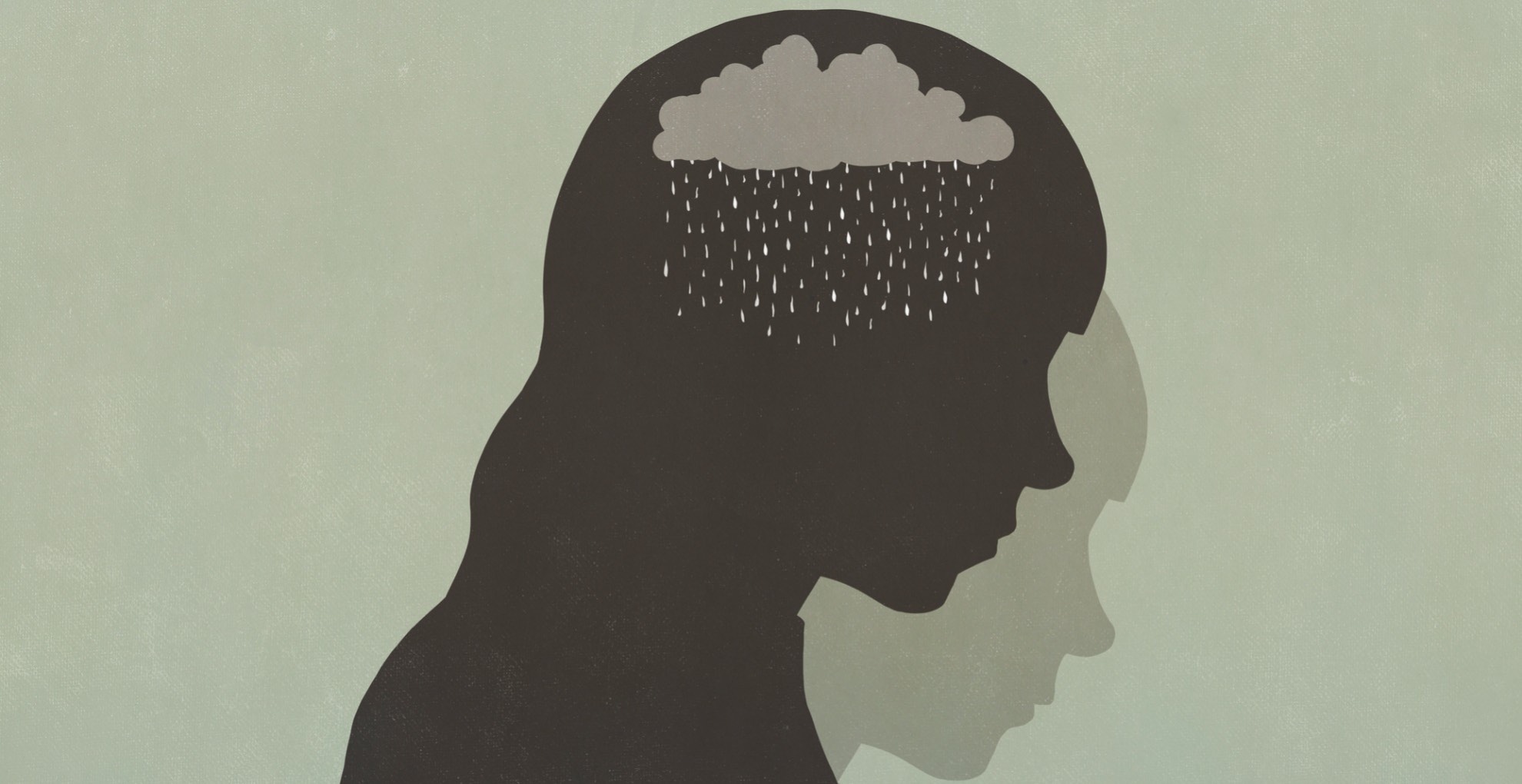The U.K. Advises Coming off Antidepressants Very, Very Slowly
In 2015, psychiatrist Mark Horowitz tried to come off his antidepressants. He reduced his dosage by a set proportion over the course of several months, which is much longer than what the United Kingdom’s guidelines recommended. But in the process of tapering, he experienced a storm of new symptoms, including anxiety, dizziness, and bouts of insomnia. “I’d wake in the morning, feeling like I was being chased by an animal on the edge of a cliff,” he says. Ultimately, he felt he had no choice but to go back on his medication.
As it happened, Horowitz had recently completed a Ph.D. on the neurobiology of antidepressants. During his training, he recalls, his professors had told him that stopping antidepressants was fairly easy. Their view was supported by the scientific literature, which had found that any withdrawal symptoms were minor and faded quickly. Experiences such as Horowitz’s were considered an anomaly.
But a series of widely reported studies published over the past seven years suggest that discontinuation symptoms are common and can be severe, including everything from panic attacks and flu-like symptoms to electric shock sensations in the head. The longer people remain on antidepressants and the higher their dose, the more likely they are to experience withdrawal symptoms.
Each year, millions of people begin taking antidepressants. They have been shown to help anxiety sufferers feel calmer and lift the moods of those with severe depression and balance their emotions. For many, the intervention is lifesaving. Yet even today, few physicians inform their patients about the potential difficulties of coming off the medication. Most national guidelines suggest a slow taper, but there is little to no guidance on precisely how to do this. Patients who experience intense withdrawal symptoms may end up remaining on antidepressants or turning to online peer support groups for help.
In late June, the U.K.’s independent health watchdog, the National Institute for Health and Care Excellence, finalized its guidelines for treating depression. When it comes to weaning off antidepressants, the new recommendations are a marked departure from most other global recommendations and from NICE’s previous 2009 guidelines, which advised tapering over four weeks, or longer for specific classes of antidepressants which exit a person’s system quickly. At the time, discontinuation symptoms were characterized as “usually mild and self-limiting over about 1 week, but can be severe, particularly if the drug is stopped abruptly.”
According to a statement emailed to Undark by NICE digital media manager Matthew Brown, the new depression guidelines offer a far more detailed picture of how to “safely and successfully withdraw from antidepressants.” The institute notes that withdrawal symptoms vary from mild to severe, depending on the individual, the antidepressant type and dose, and the duration of use. NICE also recognizes that in some cases, the withdrawal can last for several weeks and occasionally months.
“There’s no doubt that stopping antidepressants is often an unpleasant experience and that sometimes it’s worse than that, and sometimes it takes a long time,” says David Taylor, a professor of psychopharmacology at King’s College London. By acknowledging this reality, the NICE guidance is “radically different from what it was before.”
There is mounting evidence that withdrawal effects may be both more common and more severe than previously thought. In 2018, U.K. researchers issued a freedom of information request, asking for the evidence behind the 2009 NICE guidelines. It turned out the guidelines were based on two pieces of research, neither of which supported the idea that withdrawal symptoms would cease in one week.
The U.K. researchers later published a systematic review, which found that about half of people who stopped antidepressants (56 percent) experienced withdrawal symptoms and for nearly half of those people (46 percent), the effects were severe, as reported by the patients. Critics point to the review’s heavy reliance on surveys as opposed to randomized control trials, which carry more weight, and claim that it focuses on those with negative experiences rather than positive ones, ultimately biasing the findings. Nevertheless, there is a growing body of evidence that many people suffer unpleasant and protracted side effects when they come off the medication.
Meanwhile, the number of people on antidepressants continues to rise around the world, particularly in wealthier nations. In the U.K., about 17 percent of the adult population is on antidepressants, according to 2018 government data. The proportion is now likely higher in the wake of the pandemic, as doctors in England dispensed 78 million antidepressant prescriptions in 2020, four million more than in 2019. In the United States, about 13 percent of the adult population reported taking some form of antidepressant between 2015 and 2018, a significant rise from 10 percent a decade earlier.
Despite the surging numbers, there is little guidance on how to stop taking these medications. Physicians are advised on how to start the drugs, but not how to help patients come off them, says Anders Sørensen, a researcher at the Center for Clinical Intervention Research at Copenhagen University Hospital in Denmark.
In a review published earlier this year, Sørensen and colleagues investigated the clinical practice guidelines on depression issued by national health authorities and major national or international professional organizations in the U.K., the U.S., Canada, Australia, Singapore, Ireland, and New Zealand, identifying a total of 21 guidelines. Their review came out before NICE updated its U.K. recommendations in June.
Ultimately, they found that while most guidelines (71 percent) recommended stopping antidepressants slowly, they offered no guidance on how slowly, nor did they acknowledge the difficulties that many patients face. About one in five guidelines offered no guidance at all on how to come off antidepressants. Where guidelines did offer help, the researchers found, the quality was mostly poor.
Many patients end up suffering withdrawal while also contending with a medical system that doesn’t acknowledge their symptoms — “and that’s just not fair,” Sørensen says.
In an email sent to Undark by Charlie Kohler, a press officer for the U.S. Food and Drug Administration’s Center for Drug Evaluation and Research, the FDA noted that the U.S. doesn’t provide anything like the NICE guidelines, which synthesize all of the existing data on antidepressants and offer clinical recommendations. The “FDA recognizes that abrupt discontinuation of some classes of antidepressants can produce a variety of adverse reactions, some of them serious,” the email stated.
“The information for specific drugs,” it continued, “is included in their prescribing information,” which is developed by the manufacturers.
The American Psychiatric Association’s guidelines, published in 2010, are more nuanced, and suggest tapering drugs over the course of several weeks. They note that medications with shorter half-lives, in which half of the drug leaves a person’s system within two days, may need to be reduced over a longer period of time.
While there is no consensus on who will experience withdrawal and which drugs will induce symptoms, psychiatrists and scientists know that the longer people are on antidepressants, the more likely they are to experience withdrawal. Some classes of antidepressants, such as serotonin reuptake inhibitors and serotonin-norepinephrine reuptake inhibitors, are more likely to cause withdrawal.
“The way to deal with withdrawal symptoms is to follow a fixed pattern of dose reduction,” Taylor said, adding, “the brain has changed while you were taking [antidepressants], and it needs time to change back.” If patients reduce their medication too quickly, they are more likely to experience withdrawal symptoms.
Sørensen, a practicing psychologist, sees many people who are trying to come off antidepressants and “what we need is just an accurate description in the guidelines of how severe withdrawal reactions can be,” he says.
But since the guidelines largely don’t acknowledge this, “what happens is that most people will attempt to come off the drugs in the way that the guidelines recommend,” he says, “and that will obviously fail because it’s a way, way, way too fast dose reduction, and they’ll conclude, ‘OK, I couldn’t come off the drug.’”
A particularly thorny question for clinicians is how to distinguish symptoms of medication withdrawal from symptoms of depression, which could flare when a patient stops taking the medication. Many of the symptoms overlap, making it difficult to separate the two. A 2021 review looked at 33 studies to identify different approaches for stopping or continuing antidepressants, but ultimately the researchers had low confidence in their results because they found that studies did not distinguish between withdrawal and relapse symptoms.
In the absence of strong evidence, clinical opinion is divided. Some researchers, such as Horowitz, say that it is easy to identify the onset of new symptoms that cease when people start taking their medication again. Others, such as Sørensen, say that there is overlap and that physicians need to monitor patients closely to distinguish whether they are falling back into depression or their brain is rebalancing itself without the medication.
As the debate unfolds among experts, patients are turning to online support groups for help. One online group, survivingantidepressants.org, contains hundreds of thousands of posts, in which people detail their experiences and offer advice. A 2020 study identified 13 Facebook groups that claimed to support patients coming off antidepressants, totalling more than 67,000 members. It found that people joined these groups because the recommended taper methods failed. “The withdrawal experiences of tens of thousands of people remain hidden in these groups where they receive support to taper when health care services should be responsible,” the authors wrote.
After Horowitz’s harrowing attempt to come off antidepressants in four to five months, he went back on antidepressants and turned to online support groups for guidance. “Patients have worked out over years, through trial and error, that coming off more slowly” makes it easier, he said.
In 2019, Horowitz and Taylor co-wrote an article for The Lancet Psychiatry which includes some of the same information he gleaned from those sites. The main finding was that people should reduce their medication “hyperbolically” or proportionally to the previous dose. Traditional advice is that patients should reduce their dose by a half or quarter of their original dose, and stop their meds linearly and that certain types of antidepressants, those with short half-lives, should be tapered even more slowly. The new NICE guidelines recommend a hyperbolic reduction: a person should reduce their medication by 50 percent or 25 percent of the previous dose over the course of weeks or months.
Taylor says that it is possible for people to wean themselves off antidepressants, but that it takes time. “I’ve had depression a few times. I know the risks. I’ve had withdrawal symptoms. They are horrible,” he remembered. Nevertheless, if he fell into depression again, he said he would take them again, and — if they worked within a couple of weeks — he’d stay on them for about six months. Then, he’d stop by slowly and proportionally reducing his dose. “The longer you stay on them, the more likely you are to get withdrawal.”













Comments are automatically closed one year after article publication. Archived comments are below.
After the horrors of trying to “just quit” Effexor XR after decades on the stuff, I also hit on the “long slow taper” idea. I bought a cheap milligram digital scale, calculated the ratio of active drug to filler of the capsule contents then took 5% of the active amount out of a week of capsules, followed by another 5%, continuing a weekly reduction for a month. After noticing no ill effects, I bumped the weekly reduction up to 10% until I was taking nothing. That takes a loooong time but it was worth it.